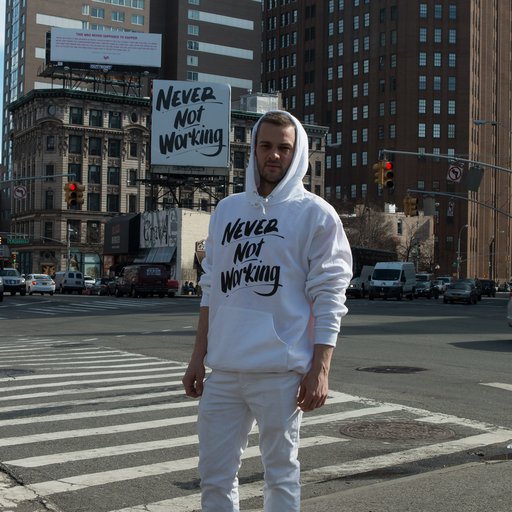Tim Noble & Sue Webster
Tim Noble and Sue Webster take ordinary things including rubbish, to make assemblages and then point light to create projected shadows which show a great likeness to something identifiable including self-portraits. The art of projection is emblematic of transformative art. The process of transformation, from discarded waste, scrap metal or even taxidermy creatures to a recognizable image, echoes the idea of 'perceptual psychology' a form of evaluation used for psychological patients. Noble and Webster are familiar with this process and how people evaluate abstract forms. Throughout their careers they have played with the idea of how humans perceive abstract images and define them with meaning. The result is surprising and powerful as it redefines how abstract forms can transform into figurative ones.
Parallel to their shadow investigations, Noble and Webster have created a series of light sculptures that reference iconic pop culture symbols represented in the form of shop-front-type signage and carnival shows inherent of British seaside towns, Las Vegas and Times Square. With the aid of complex light sequencing these signs perpetually flash and spiral out messages of everlasting love, and hate.
Noble & Webster have created a remarkable group of anti-monuments in their eighteen-year career, mixing the strategies …
Tim Noble and Sue Webster take ordinary things including rubbish, to make assemblages and then point light to create projected shadows which show a great likeness to something identifiable including self-portraits. The art of projection is emblematic of transformative art. The process of transformation, from discarded waste, scrap metal or even taxidermy creatures to a recognizable image, echoes the idea of 'perceptual psychology' a form of evaluation used for psychological patients. Noble and Webster are familiar with this process and how people evaluate abstract forms. Throughout their careers they have played with the idea of how humans perceive abstract images and define them with meaning. The result is surprising and powerful as it redefines how abstract forms can transform into figurative ones.
Parallel to their shadow investigations, Noble and Webster have created a series of light sculptures that reference iconic pop culture symbols represented in the form of shop-front-type signage and carnival shows inherent of British seaside towns, Las Vegas and Times Square. With the aid of complex light sequencing these signs perpetually flash and spiral out messages of everlasting love, and hate.
Noble & Webster have created a remarkable group of anti-monuments in their eighteen-year career, mixing the strategies of modern sculpture and the attitude of punk to make art from anti-art. Their work derives much of its power from its fusion of opposites, form and anti-form, high culture and anti-culture, male and female, craft and rubbish, sex and violence.
Since their first solo show in London, British Rubbish in 1996, Noble & Webster have enjoyed international recognition with solo exhibitions at Rockefeller Plaza, New York, The Freud Museum, London, CAC Malaga, Museum of Fine Arts, Boston, P.S.1/MoMA, New York, Milton Keynes Gallery, UK, Deste Foundation, Athens, and The Chisenhale Gallery, London. Their work was included in Statuephilia—Contemporary Sculptors at The British Museum, London in 2008–09 and in the exhibition Apocalypse—Beauty and Horror in Contemporary Art, at The Royal Academy, London, 2000.
Courtesy of the Artists
AISTHI Foundation, Beirut
Arken Museum of Modern Art, Copenhagen
The British Museum, London
Es Baluard Museum, Palma, Spain
Honart Museum, Tehran, Iran
Lyonel-Feininger Museum, Quedlinburg, Germay
Museum of Contemporary Art, Denver
Museum of Contemporary Art, Los Angeles
National Portrait Gallery, London
Saatchi Collection, London
Samsung Museum, Seoul, Korea
Solomon R. Guggenheim Museum, New York





